The Estadio Coliseum Alfonso Pérez fell to tears after Getafe, one of the youngest sides in the Spanish top-flight, dropped to Segunda División ending their 12 years of LaLiga action in 2015/16. Struggling on their return to the Segunda too, Getafe had other plans- a managerial switch – appointing Spaniard José Bordalás.
Bordalás, former Spanish forward forced to retire following an injury at a mere age of 28, has made a name for himself – the man behind Getafe’s rise from the ruins. José Bordalás’s appointment turned into a ‘Herculean’ decision for the Azulones, who’ve come a long way to the brink of Champions League qualification this season and are currently fourth on the table. For a young club seeking identity from the capital of Spain, Bordalás has become an idol, that took them to an 8th-place finish on their return to Liga and finished 5th the following 18/19 season.
For a side that has started to believe, we’re here to discuss José Bordalás’ tactics that have worked for Getafe. Fasten your seat belts, this tactical analysis is going to be as ‘anti-football’ as it gets.
4-4-2: The José Bordalás Way
José Bordalás has been rigid about how his teams occupy the pitch ever since he has made his way to the Spanish capital. Getafe under Bordalás are seen lining-up in a 4-4-2 or occasionally 4-4-2 with a double pivot. Bordalás’ emphasis on maintaining his side’s structure to ultimately accomplish his side’s dominance off the ball makes him tactically stubborn. Bordalás sticks to his original plans, forcing the opponent to adapt to his side’s rigid structure based on the small integration of players within smaller areas in the pitch. Rather than adapting themselves, they seem to strangle the opponents and have been successful in forcing sides out of their comfort zone.
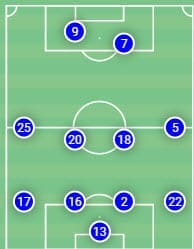
Getafe has largely been about creating mini-combination of players within the broad formation they have while retaining the originality. Bordalás uses this method to create numerical superiority in his side’s favour, which we will discuss throughout this article. With a positional sense of advancement and discipline, Bordalás manages to create advantage on the attack, on the press, and on the defence as well. Getafe have been able to create mobile situations for forwards to receive passes in attacks, 2 vs. 1 situation while the opposition has the ball on the press and chances for the defenders to close in on the ball-carrying player while defending.
These attributes have become peculiar characteristics of Getafe ever since José Bordalás took over the struggling side after managing 12 sides in succession. The formation often termed to be a defensive one and outdated has seen a massive boost with Bordalás trusting his players to execute in the system. Four defenders, Four midfielders, two strikers. 4-4-2: José Bordalás’ way.
Defence- the beginning of Getafe’s attacks
Breaking the apparent stereotype – Getafe’s defensive philosophy is much more than just rough plays and fouls. While it might seem to be a rather rustic approach, Bordalás’ sides are tactically stout and defend with confidence on the tactic that their coach puts on papers.
The most prominent feature of Getafe’s defence under Bordalás lies in their formation itself. Getafe create two lines of 4 players behind their forwards, which itself becomes hard to penetrate for the sides that build-up centrally.
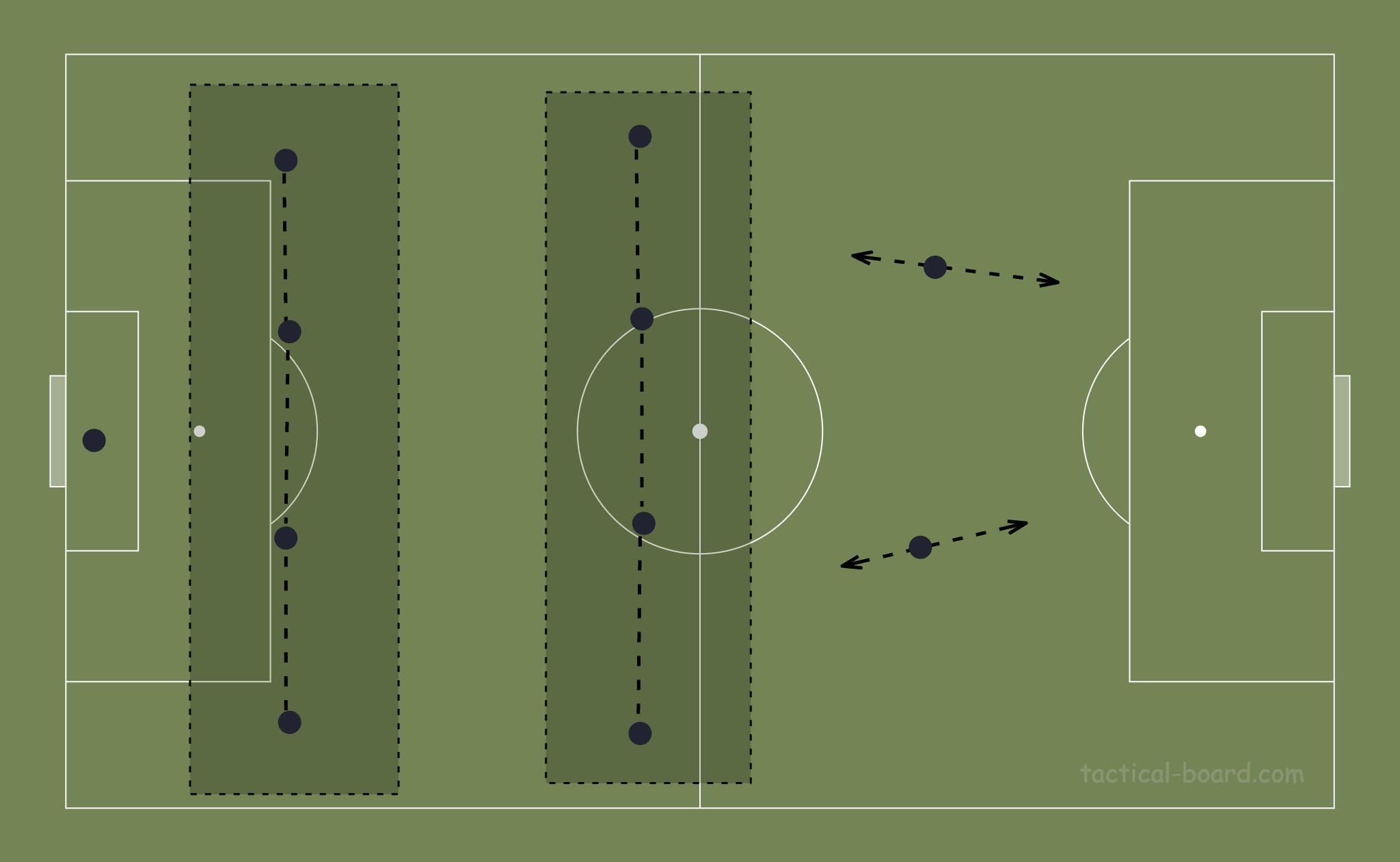
Bordalás’ team creates a numerical advantage on defense with the midfielders dropping deep. Central midfielders with the likes of Mauro Arambarri and Nemanja Maksimović are frequently used as a double pivot to assist the back two of Djené Dakonam and Xabier Etxeita. This makes Getafe comparatively intact and less-vulnerable of open spaces that can be capitalized centrally.
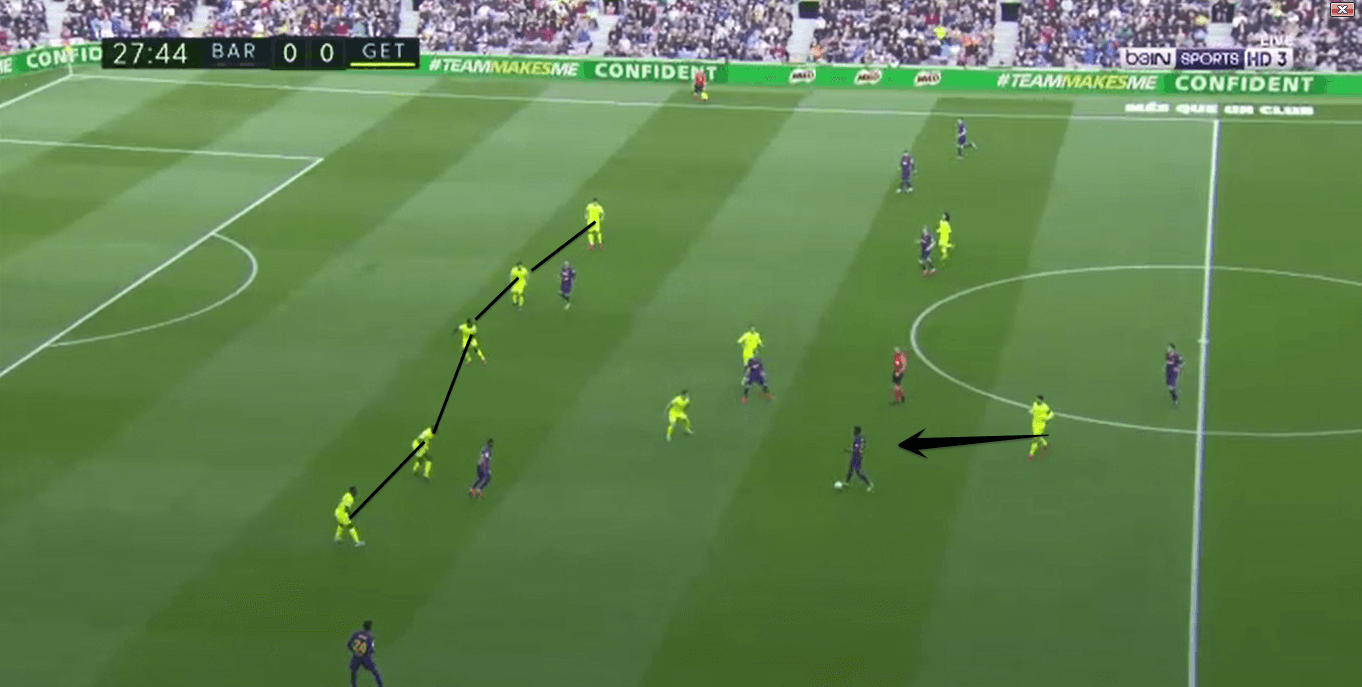
In the instance above, one central midfielder drops down to fill the void between the center-backs. In order to compensate for the drop, Jaime Mata drops down to the middle, balancing the number of midfielders that go for the ball.
Similarly, Getafe have managed to be alright even after the departure of Carbera. The back two of Etxeita and Dejene have been recovering balls outside the box, dealing with the aerial balls quite well and complimenting each other’s style of play. Bordalás has been able to make the most out of the defensive players that he has. The process can be seen in the following instance, where two center-backs close in after detecting the opposition’s run into the void.
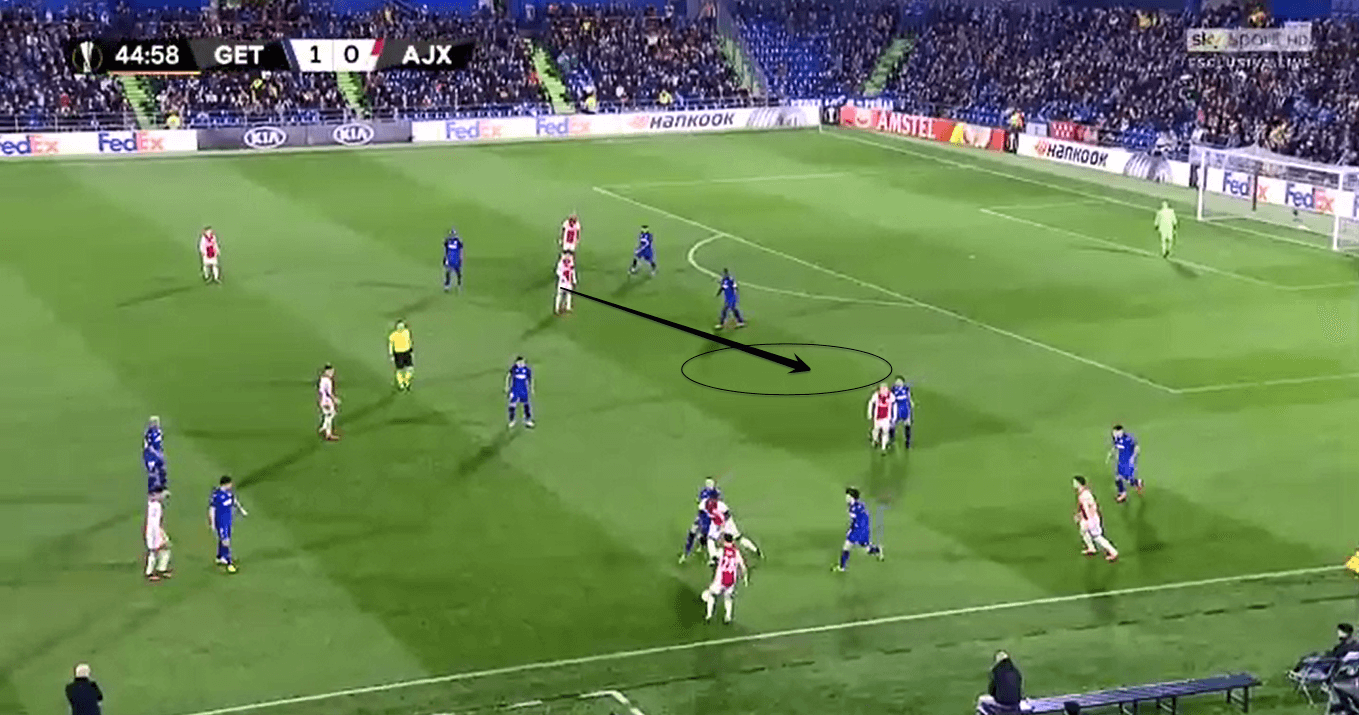
The two players, who seem to be marking their own opposition players, now combine to close in at the run, ultimately recovering the ball without letting the player take advantage of the situation:
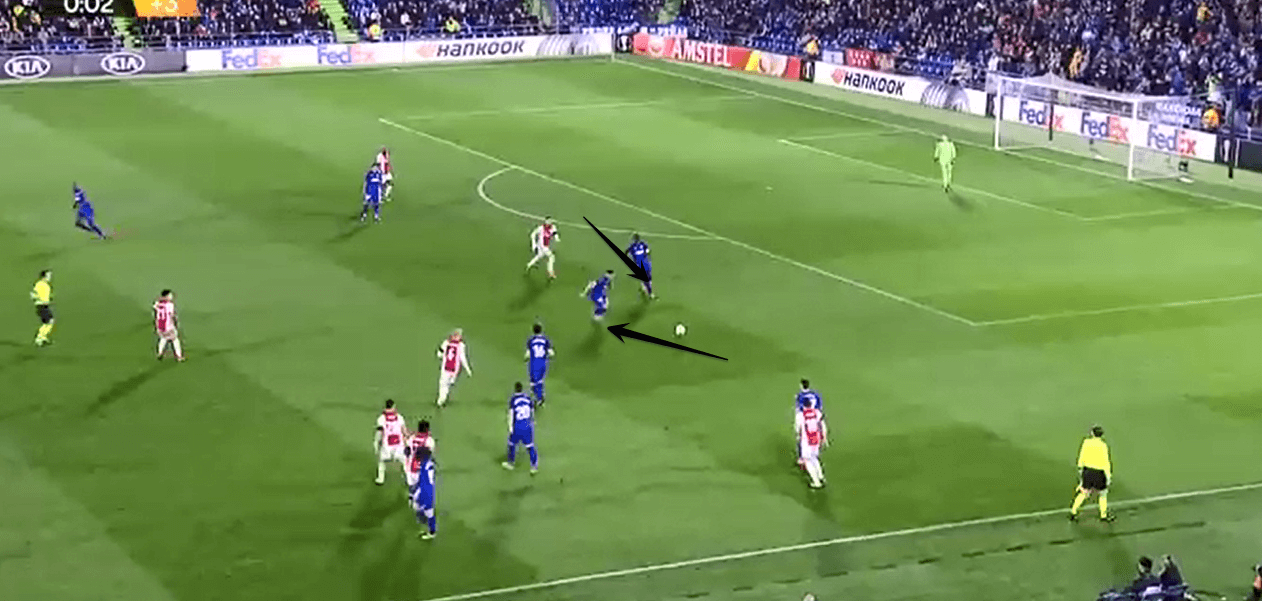
The transition from defence to attack – Getafe’s two engines
Getafe might seem like a team that likes to sit back and defend most of the time based on the papers but in reality, they are a threatening side once they get hold of the ball. After a successful defensive recovery, Bordalás’ Getafe uses two engines- Maksimović and Arambarri to quickly transform defense into an attack. First things first, the presence of a double pivot enables the side to defend effectively from the center.
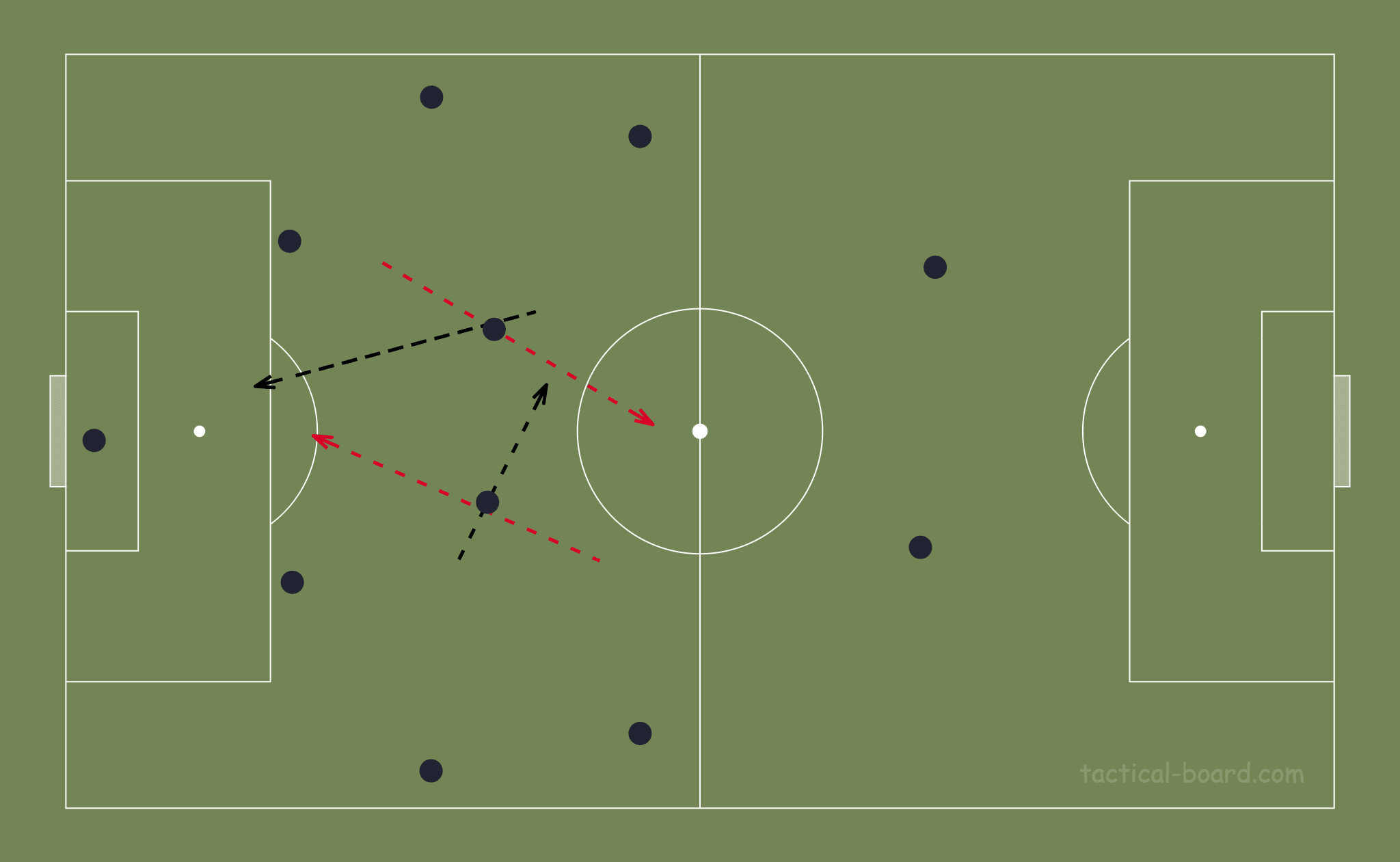
When one of the double pivots drops down to cover the void, the other one occupies a more central role – in order to track for the extra attacking player and then provide a transition for an attack in case of a recovery.
Maksimović and Arambarri have been very effective in this module. Maksimović has turned himself into an ideal modern-day box-to-box midfielder, supporting the team in both attacks and defense. Arambarri has been a perfect companion to what Maksimović possesses, using his pace to cancel out opponent counters and using it for counter-attacks as well.
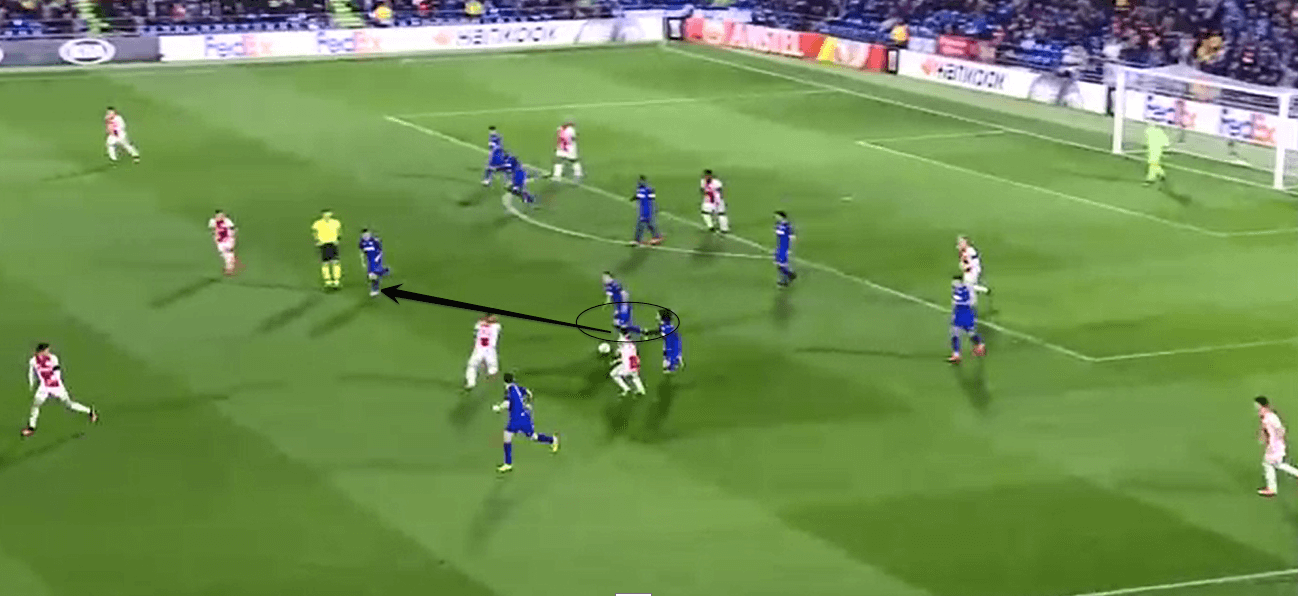
One of the major reasons for Bordalás being able to hit back on the opportunities that Getafe get without being on possession is the presence of a tactically sound and complementing central midfielders in Maksimović and Arambarri. Rightly said, the two are the ‘engines’ of Bordalás’ journey so far and will be looking forwards.
Getafe’s ‘smart’ pressing
In modern-day football, pressing high and recovering the second balls are more closely linked to sides that are comfortable with the ball and are focused to build-up from the back dominating the possession. Getafe, however, press high but are comfortable without the ball. It all comes down to Bordalás’s approach of pressing high and when necessary, forcing the opponents to change their style of play.
Getafe press aggressively with a compact structure. Higher up the pitch, Getafe use their inverted fullbacks and wide midfielders to press against the opposition fullbacks and limiting their passing options nearby to increase the chances of errors while they attempt to send the ball to the other flank or pass wrong.
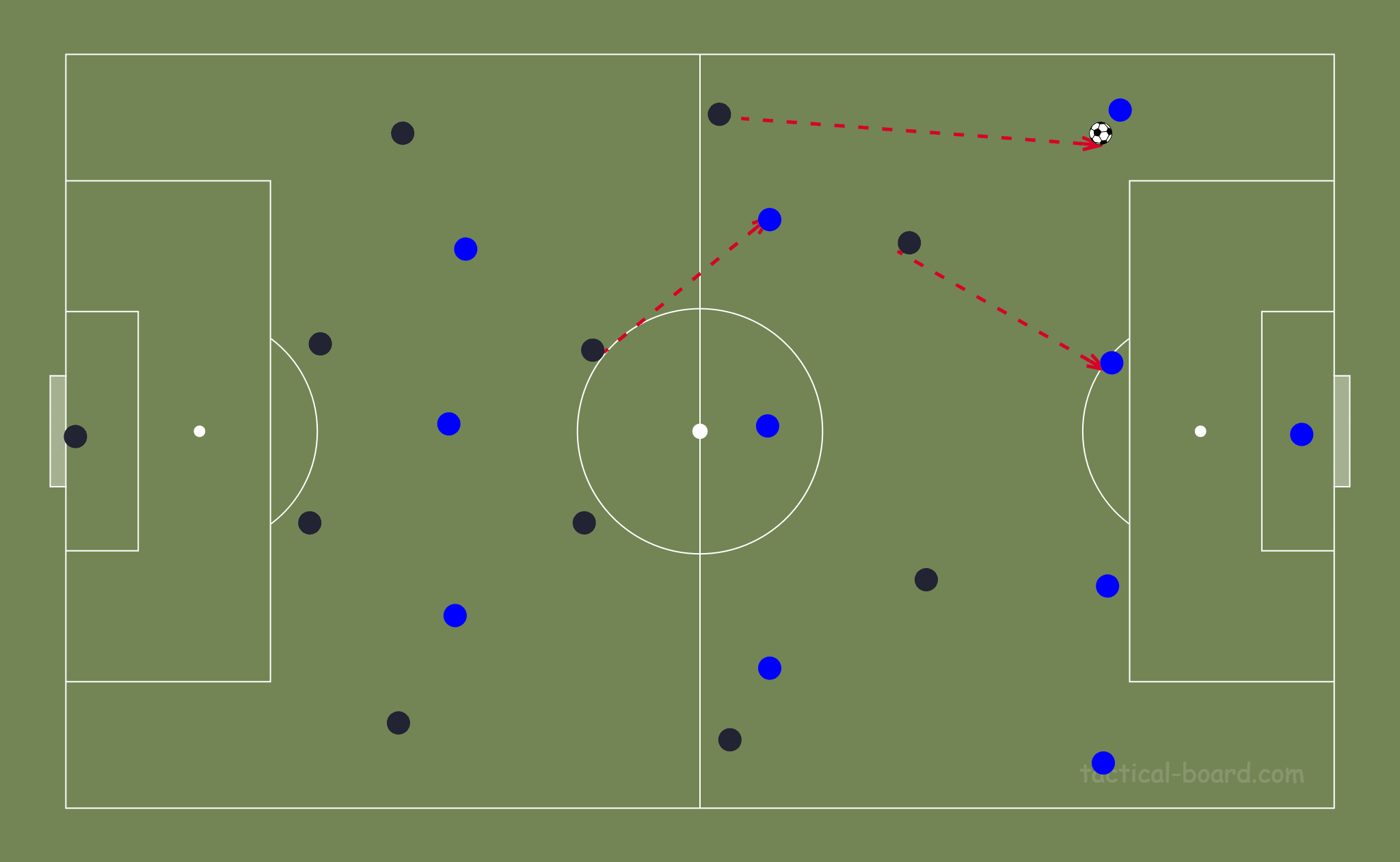
Similarly, Getafe tend to outnumber their opponents on the press as well, often closing in on a 2 vs 1 situation. This helps to create enough pressure on the opposition player to make quick decisions and create a greater margin of error.
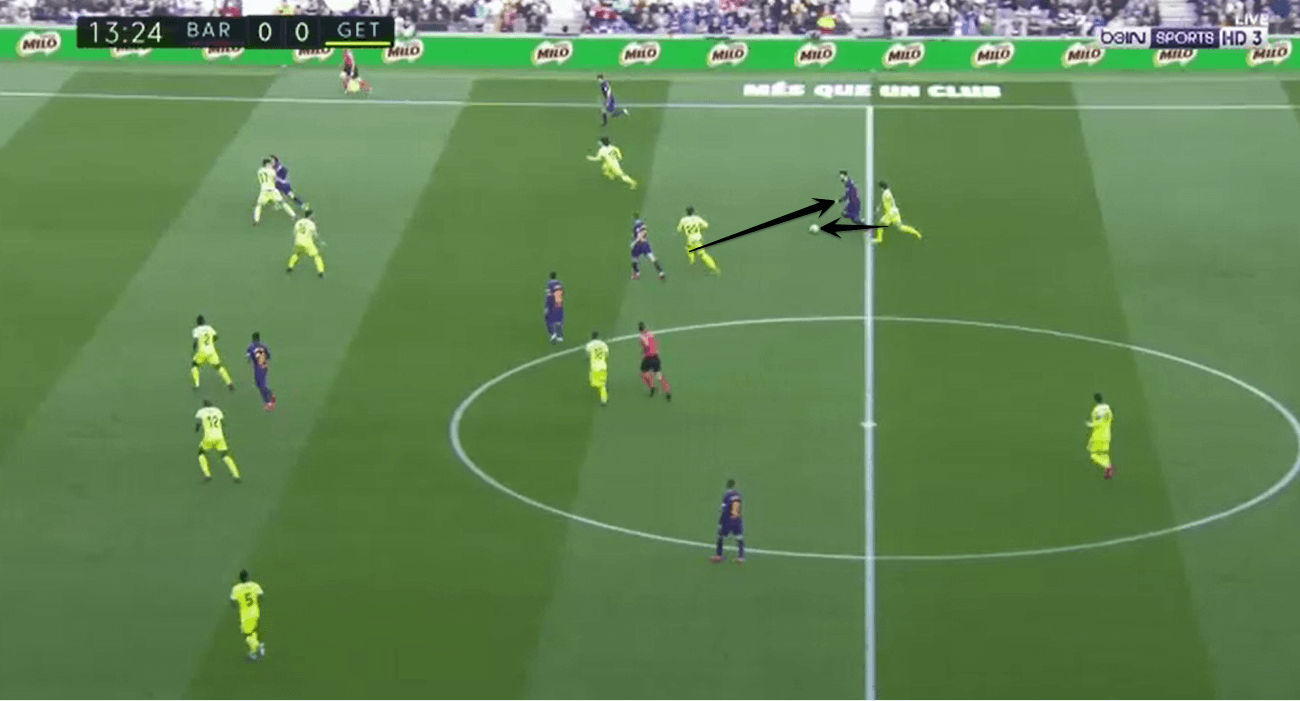
In the instance shown, the opposition center-back recovers the ball and attempts to make a run from the wider side of the pitch. The forward comes in support of the wide player to provide a numerical advantage to recover the ball. At the end of the move, Getafe nullify any chance of a build-up and network of passes through intact discipline between two players involved in the press.
Inverting players and smart movements
One thing that seems to bother Getafe’s opponents, often sides that choose to play on possession is their ability to play their own brand of football limiting the opponents on their own half.
This is where Bordalás’ uniqueness comes out on top. Bordalás frequently opts to invert his wide players, making Getafe more advanced than a contemporary 4-4-2 playing side. As a result, the inverted wingers come to help out with the center backs to defend. For this very reason, Getafe start with full-backs as wide midfielders occasionally, provided that they know exactly when to make runs, move and when to defend and trackback.
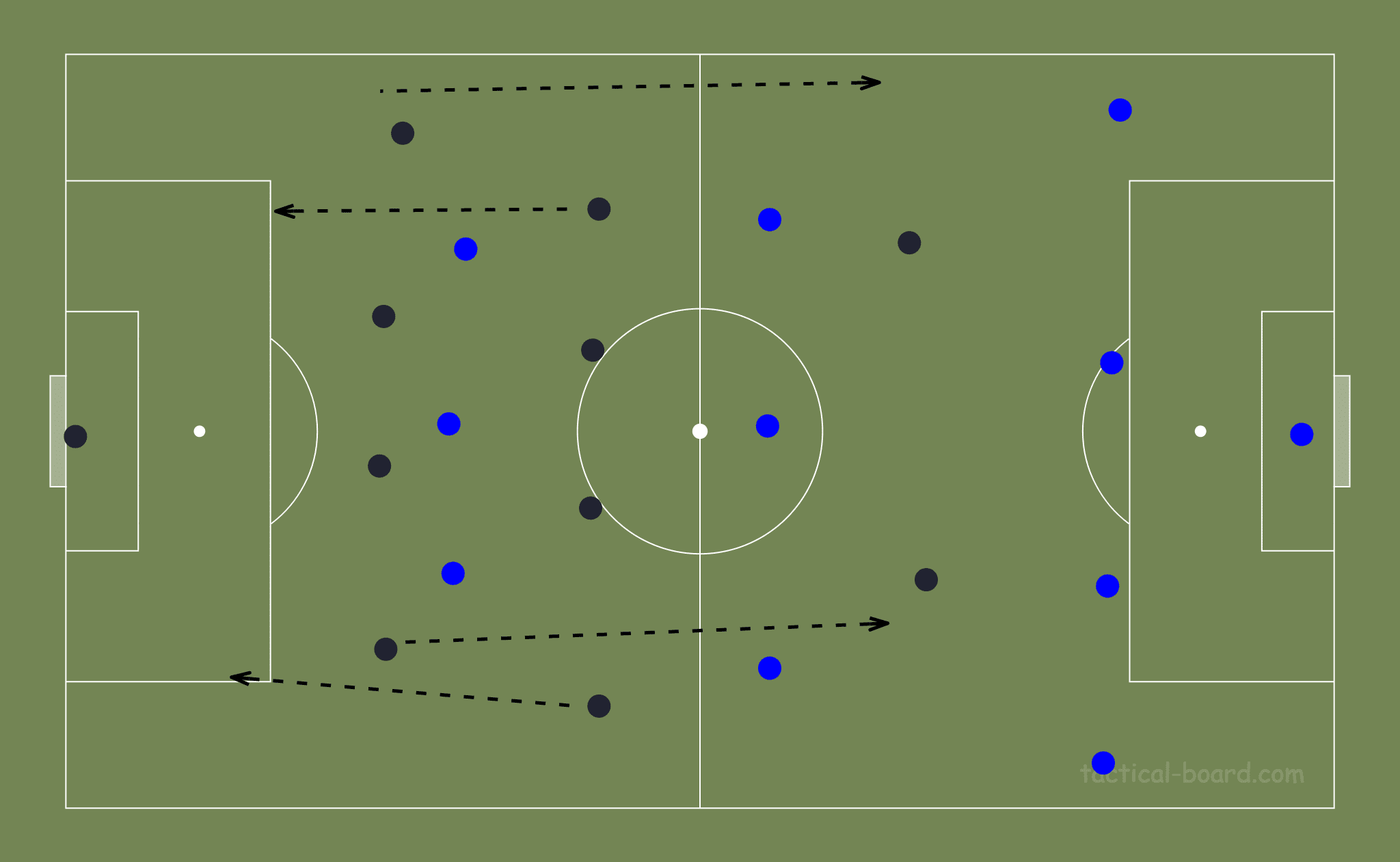
Generally, Getafe’s wider players are seen to have a healthy work rate under Bordalás. Bordalás occasionally opts to play Allan Nyom both as a right-back and a right midfielder out wide. This ability to be able to invert positions during play and make smart movements depending upon the tempo of the opponent has been groomed by Bordalás a lot and is vital to his side’s success.
Attacks- the two-striker advantage
The Bordalás chasm of attack is driven by a Spanish duo of Jaime Mata and Jorge Molina. Both players, struggling to make a name for themselves some years ago, have absolutely thrived under Bordalás. Bordalás here, in the forward partnership duo, tries to outnumber the opponent centre-backs using the two mobile forwards upfront.
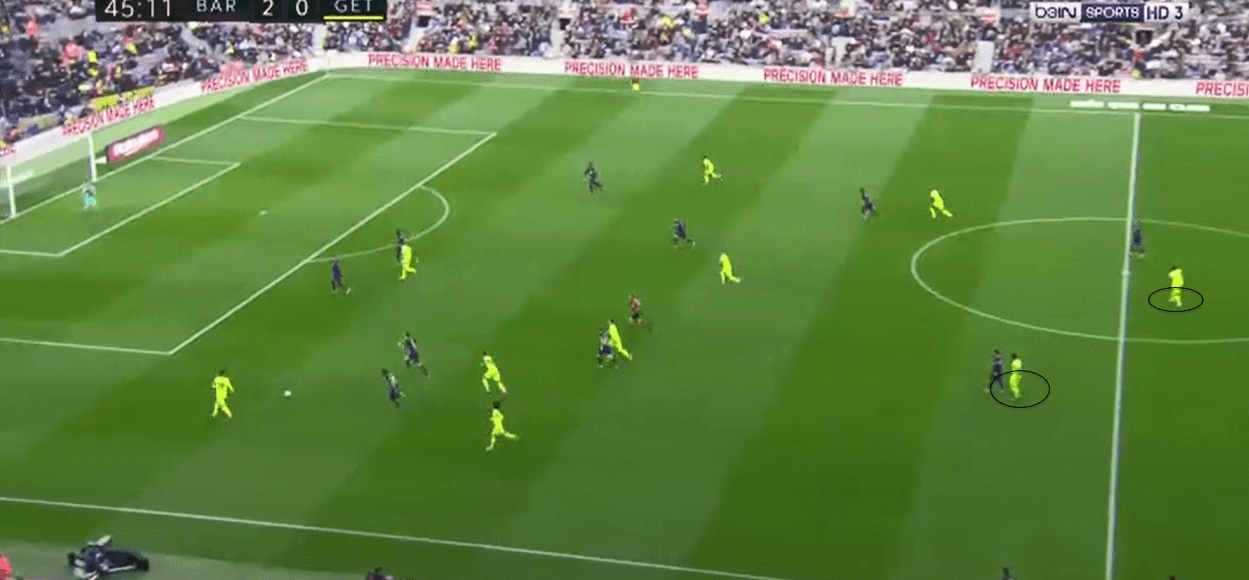
Jaime Mata often makes the forward runs, with the support of Getafe’s wide players while Jorge Molina is often seen dragging defenders with his movements to create a space for an attack.
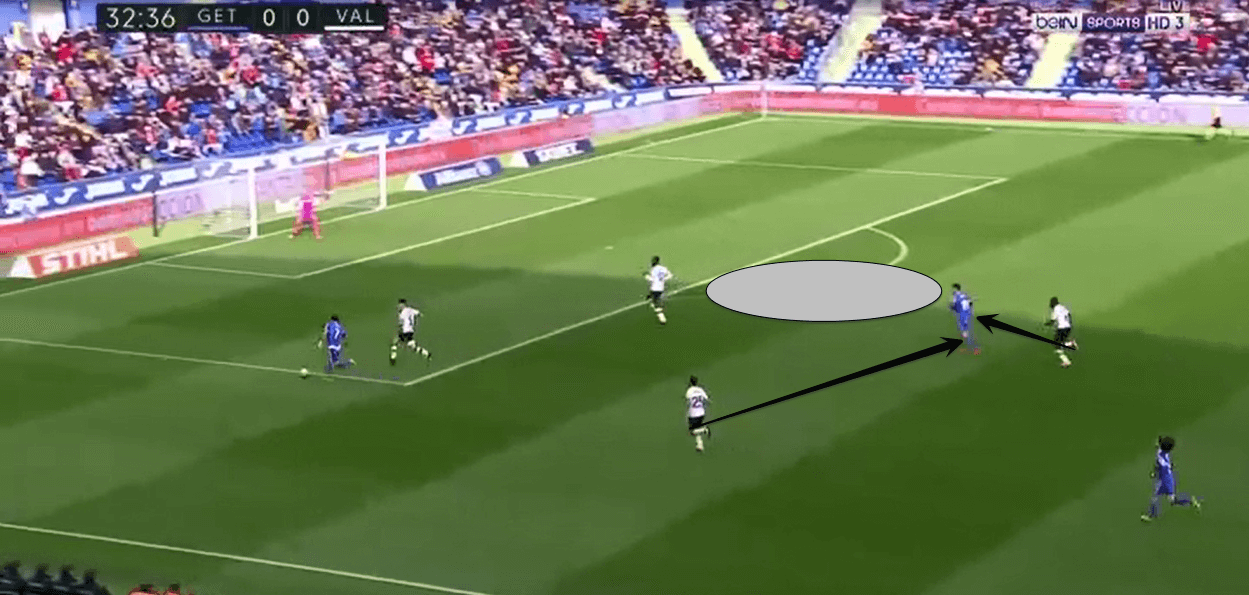
On the occasion shown above, Mata’s run is complemented by Molina’s off-the-ball deep movement to draw defenders towards him. This creates a two-way opportunity, either for Mata to cut back and take a shot or enable the arriving player to occupy a central role to take a shot off Mata’s pass. Bordalás has made the pair cover for each other’s weaknesses in attributes with their own.
Getafe’s bench of Ángel Rodríguez and Deyverson too is strong looking at the fact that Angel has scored 8 out of 10 matches he’s started on the bench. Deyverson, on the other hand, has been an effective option in place of Jorge Molina.
Anti-football?
As Bordalás has been saying time and again, his brand of football is not played to please everyone and many have claimed it to be frustrating to watch. Getafe, however, are making a mark of themselves and especially Bordalás, who’s become an example for managers who play pragmatic football to counter possession-based sides.
Bordalás’ tenure so far with Getafe has been heroic as the man has been able to deliver and able to spark hope to players. Maksimović and David Soria, both termed misfits in their previous tenures are finding their own identity and there are a lot of players that have stuck to Bordalás’s side, permanently committing to the club. As Bordalás has extended his contract for a further three years, big things will come for Getafe, as this analysis talks about, provided that José Bordalás continues his footballing emblem – anti-football as they call it.
Because there’s a new José in town, and it’s Bordalás. José Bordalás.





Comments